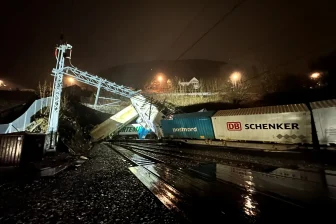EIM Rail: noise differentiated track access charges will contribute to modal shift
The association of European Rail Infrastructure Managers (EIM Rail) has published its Position Paper on noise differentiated track access charges. According to it, EIM Rail welcomes the evaluation of the implementation of the Regulation 2015/429 being launched by the European Commission this year. The association argues that noise differentiated track access charges will contribute to modal shift and rail freight competitiveness.
The European Commission has adopted Implementing Regulation (EU) 2015/429 (“the Regulation”) as a legal framework for noise differentiated track access charges schemes (NDTACs) across the EU. The main target of the document is to stimulate modernisation of rolling stock via reduced track access charges, decrease freight noise and improve the well-being of EU citizens. In 2019 the European Commission commenced the Evaluation of the implementation of the NDTACs schemes, namely the progress of the retrofitting of wagons and the impact of the schemes on the overall rail freight sector’s competitiveness.
“EIM – European Rail Infrastructure Managers – welcomes the evaluation of the implementation of the Regulation and acknowledges that tackling the issue at source would be the most efficient way forward and could help saving significant resources for the infrastructures while contributing to the modal shift and rail freight competitiveness,” the association reported in its official statement. Currently, the Regulation applies only to the Netherlands, Austria and Germany that modified their infrastructure charges. Moreover, Switzerland has introduced noise bonus with preferential treatment to silent railway vehicles with respect to the track access charges in 2002.
Scope and interoperability
EIM Rail made four remarks regarding the evaluation. The association noted that the voluntary nature of the Regulation should be preserved during the revision. “Member States (MS) have different capabilities for national funds and financing systems on incentivising silent and retrofitted wagons, and therefore the Regulation must remain voluntary for all MSs including those countries that have decided to apply NDTACs schemes,” EIM Rail noted.
The second remark concerned the interoperability of wagons with and without the noise-reducing brake blocks, especially in winter conditions. “As silent wagons with composite brake blocks today do not have fully functional braking capacity in some specific winter conditions, introducing schemes for retrofitted wagons on a broad basis may have risks for the interoperability on networks where such conditions may occur,” the association stated.
Noise TSI and financing
The third remark is dealt with Noise TSI (Technical Specification for Interoperability). EIM Rail specified that most of the freight wagons running in some Member States will be upgraded or replaced by 2024 when TSI Noise should be implemented. “For this reason, EIM does not oppose a potential prolongation of the NDTACs in the countries that apply them for an additional two years,” the organisation clarified.
And the last remark is about financing. EIM Rail noticed that freight wagons with composite brake blocks become more popular among the railway undertakings. “The current Connecting Europe Facility (CEF) call for the retrofitting is a good example of the efforts in reducing rail freight noise at EU level. The NDTAC schemes can be complementary to CEF and will speed up the process of retrofitting all existing wagons,” the infrastructure association noted.
Also read:



